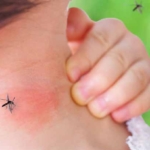Genu Valgum (knock knees) and How To Correct It

by Paula Allia PT, DHSc, MTC, OCS
by Paula Allia – PT, DHSc, MTC, OCS
Genu valgum is a medical diagnosis for the knee which simply means knock knees. This is a condition that is recognized with the malalignment of the leg in which the upper leg bone (femur)is further internally rotated and inward (adducted) and the tibia is more externally rotated out.
This position can lead to the kneecap (patella) not tracking properly when bending and straightening the knee thus dysfunction.
There are many causes of genu valgum. Problems can start inane one of the joints of the lower extremities. To help to align, postural alignment should be observed and each mal-aligned area should be addressed so that improvements can occur. If not addressed early, this position can lead to arthritic changes and panica ensue.
When evaluating the knee for genu valgum, the hip and the foot should be evaluated. Certain hip angles can predispose the knee to angle changes but many times, proper exercise can lead to improvements to avoid pain and dysfunction. In the hip, weakness in the external rotators and the abductor muscles, particularly the posterior portion of the gluteus medius can be present. Also, the adductor muscles on the inner thigh can be tight and should be stretched.
The knee itself can be strengthened all around. If there is too much external rotation of the tibia the medial hamstring should be strengthened. Also, patella alignment and stretching the tight sections while strengthening the overstretched portions is key. Also, the inside most medial quadricep muscle of the thigh, the vastus medialis (VMO) tends to be weak in this condition.
In the foot, the foot mechanics need to be addressed. First observe the foot in anatomical position and in gait. If the arch is low (more pronated) or excessive pronation occurs in gait being fitted for orthotics can help align the structures of the foot. This will provide a more stable foot base and allow the corrections above to be focused on. Correcting this first will help to align thalweg from the ground up.
Genu valgum induces femoral anteversion, tibial lateral torsion, increase Q angle, lateral dislocation, toe out and subtalar pronation. What this means is that the hip turns in then relatively the lower bone (tibia) turns out some. This can lead to the arch of the foot dropping (pronation).
There can be varied amounts of these components and depending upon where the changes have occurred strengthening can be done to correct these abnormal movement patterns.
Having a strong core is very helpful so if there are weaknesses in this area (which there usually are) work on core and pelvis control so that the leg exercises have the ability to correct alignment.
Here are the muscles that need to be addressed:
Hip
- Tight hip adductors
- Tight internal
- Weak external rotators
- Weak abductors
Knee
- Weak VMO
- Tightness developing around the lateral (outer) knee and/or patella tracking problems
Ankle
- Weak arch muscles
Overall, exercises can begin by performing 10 reps and building up to 3 sets of 10-15. It is very important to be performing these exercises with the right angles. It is all about the quality first and not the quantity.
Her’s To Your Health
For further information call Fitness Together in downtown Naples at 239.263.9348. We have been in business here for 19 years so give us a call today!




Leave a Reply
Want to join the discussion?Feel free to contribute!